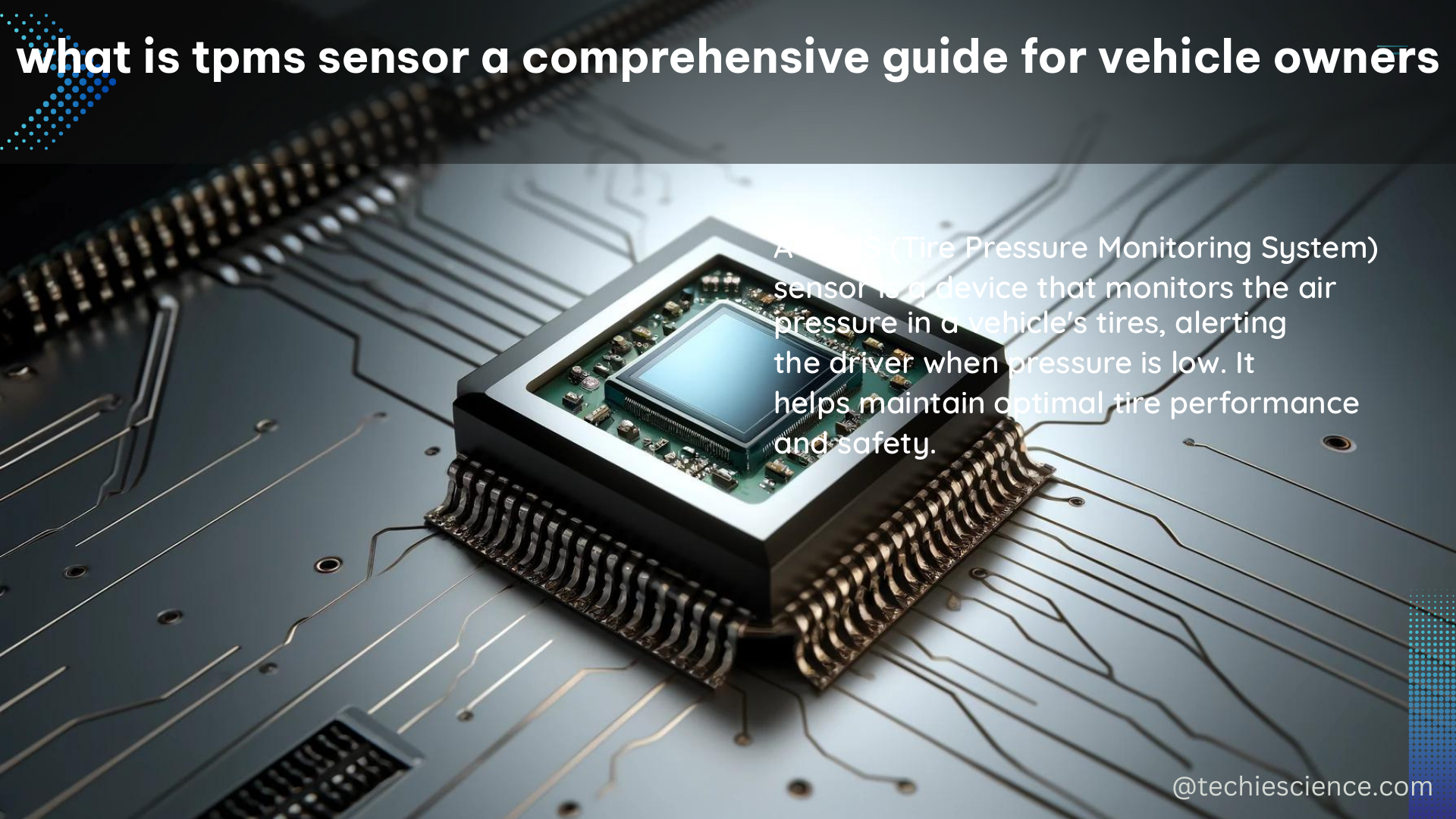A Tire Pressure Monitoring System (TPMS) sensor is a crucial component in modern vehicles, providing real-time monitoring of tire pressure and temperature to ensure the safety and efficiency of the vehicle. This comprehensive guide will delve into the technical specifications, functionality, and importance of TPMS sensors for vehicle owners.
Understanding TPMS Sensors
TPMS sensors are small, battery-powered devices installed in the tires of a vehicle. These sensors continuously monitor the air pressure and temperature inside the tires and transmit this information to the vehicle’s onboard computer using either a 433 MHz or 315 MHz radio frequency (RF) communication protocol.
Technical Specifications of TPMS Sensors
- Communication Protocols: TPMS sensors typically use one of two communication protocols: 433 MHz or 315 MHz. The choice of protocol depends on the vehicle manufacturer and the specific model.
- Pressure Measurement Accuracy: TPMS sensors have an accuracy of ±1.5 psi (pounds per square inch) for pressure measurements.
- Temperature Measurement Accuracy: TPMS sensors have an accuracy of ±2°C for temperature measurements.
- Battery Life: TPMS sensors have an average battery life of 5-10 years, depending on usage and environmental conditions.
- RF Transmission Range: The RF transmission range of TPMS sensors is typically around 30-50 feet (9-15 meters), although this can vary depending on the specific sensor and environmental conditions.
Functionality of TPMS Sensors
- Pressure Monitoring: The pressure sensor inside the TPMS device continuously measures the air pressure in the tire and sends this information to the vehicle’s onboard computer.
- Temperature Monitoring: The temperature sensor inside the TPMS device monitors the temperature of the tire and transmits this data to the onboard computer.
- Alert System: When the tire pressure falls below a predetermined safe threshold, the onboard computer triggers a warning light or message on the vehicle’s dashboard, alerting the driver to the issue.
Importance of TPMS Sensors for Vehicle Owners

TPMS sensors play a crucial role in ensuring the safety and efficiency of a vehicle. Underinflated tires can lead to several problems, including:
- Reduced Fuel Efficiency: Underinflated tires create more rolling resistance, which can result in decreased fuel efficiency and higher fuel consumption.
- Uneven Tire Wear: Improper tire inflation can cause uneven wear, leading to the need for more frequent tire replacements and increased maintenance costs.
- Increased Accident Risk: Underinflated tires are more susceptible to blowouts, which can increase the risk of accidents and compromise the vehicle’s handling and stability.
By monitoring tire pressure and temperature in real-time, TPMS sensors help vehicle owners maintain optimal tire conditions, improve fuel efficiency, and enhance overall driving safety.
Maintenance and Troubleshooting of TPMS Sensors
To ensure the proper functioning of TPMS sensors, vehicle owners should:
- Regularly Check Tire Pressure: Regularly check the tire pressure, including the spare tire, and maintain the recommended inflation levels as specified by the vehicle manufacturer.
- Replace TPMS Sensors: If a TPMS sensor is malfunctioning or the battery is depleted, it should be replaced to ensure the system’s continued reliability.
- Avoid Interference: TPMS sensors can be affected by electromagnetic interference from other electronic devices or nearby metal objects. Keeping the sensor area clear of interference can help maintain accurate readings.
- Seek Professional Assistance: If the TPMS warning light remains illuminated or the system is not functioning correctly, it is recommended to have the vehicle inspected by a qualified automotive technician.
Conclusion
TPMS sensors are an essential safety feature in modern vehicles, providing real-time monitoring of tire pressure and temperature. By understanding the technical specifications, functionality, and importance of TPMS sensors, vehicle owners can ensure the safety, efficiency, and longevity of their vehicles. Regular maintenance and troubleshooting of TPMS sensors can help prevent costly issues and enhance the overall driving experience.
References:
- Defense Acquisition Guidebook – DOT&E: https://www.dote.osd.mil/Portals/97/docs/TEMPGuide/DefenseAcquisitionGuidebook.pdf
- Federal Motor Vehicle Safety Standards; V2V Communications: https://www.federalregister.gov/documents/2017/01/12/2016-31059/federal-motor-vehicle-safety-standards-v2v-communications
- NASA Systems Engineering Handbook: https://lws.larc.nasa.gov/vfmo/pdf_files/%5BNASA-SP-2016-6105_Rev2_%5Dnasa_systems_engineering_handbook_0.pdf
- Joint Polar Satellite System (JPSS) Program Lexicon: https://www.nesdis.noaa.gov/s3/2023-09/470-00041_JPSS_Program_Lexicon_RevD__May_16_2019.pdf
- USENIX Security ’19 Technical Sessions: https://www.usenix.org/conference/usenixsecurity19/technical-sessions

The lambdageeks.com Core SME Team is a group of experienced subject matter experts from diverse scientific and technical fields including Physics, Chemistry, Technology,Electronics & Electrical Engineering, Automotive, Mechanical Engineering. Our team collaborates to create high-quality, well-researched articles on a wide range of science and technology topics for the lambdageeks.com website.
All Our Senior SME are having more than 7 Years of experience in the respective fields . They are either Working Industry Professionals or assocaited With different Universities. Refer Our Authors Page to get to know About our Core SMEs.